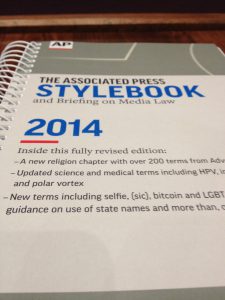 Or at the very least, my frustration. I have been championing an AP Style-mandated, oft-publicly ignored grammar rule for years, much to the chagrin of coworkers and clients alike: the over/under vs. more/less/fewer than rule.
Or at the very least, my frustration. I have been championing an AP Style-mandated, oft-publicly ignored grammar rule for years, much to the chagrin of coworkers and clients alike: the over/under vs. more/less/fewer than rule.
Here’s how it works (or used to work, but we’ll get to that): it has become commonplace to use “over” or “under” to qualify amounts, such as “I have worked at Mustang Marketing for over five years.” Sound familiar? No surprise there—this usage is as ubiquitous as texting in a movie theater (the theme here is popular ≠ right). The problem is that the words “over” and “under” dictate physical placement. I have not literally worked above the physical matter of five years at Mustang Marketing—I have worked there longer than five years, or more than five years.
See the distinction? Good. Remember it.
Or, you know, don’t—because in the 2014 edition of my coveted The Associated Press Stylebook, AP Style has surrendered to this battle, thereby relinquishing my power to circle this across-demographic mistake with a comforting sense of superiority and aplomb. (I still may do this, but I don’t imagine it will survive a lot of back-and-forth without the security of this treasured grammar guide to back me up.)
What this also means is that it’s time to comb through this new edition for other revised rules and regulations. Stay tuned for additional updates—both to AP Style, and my job.